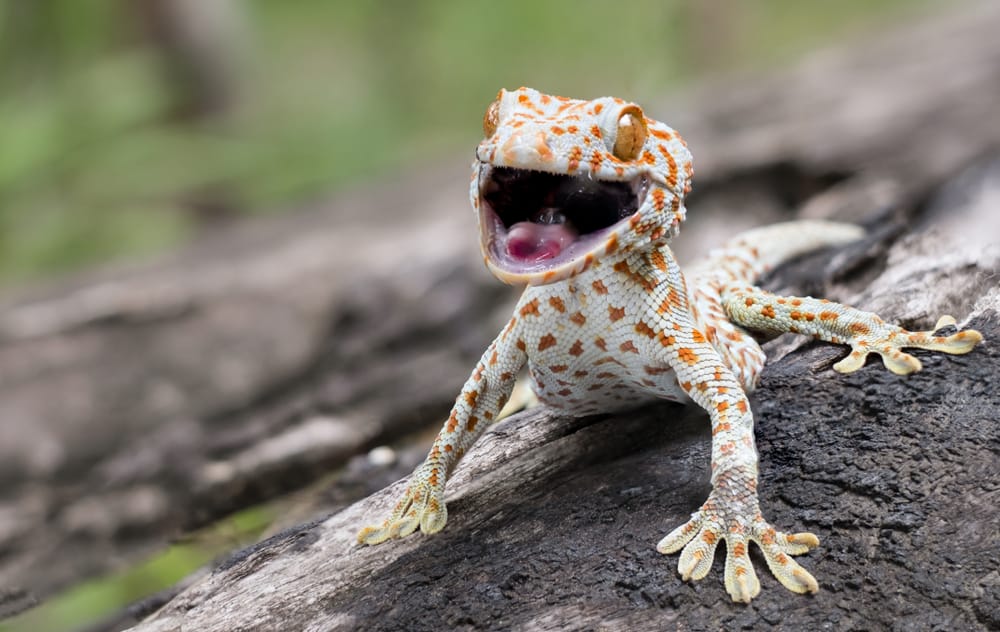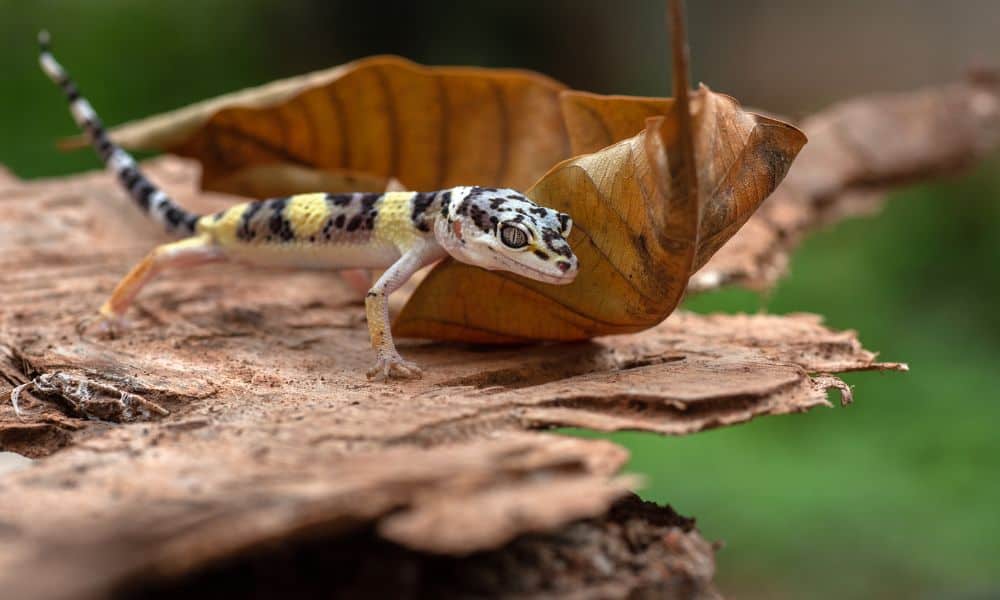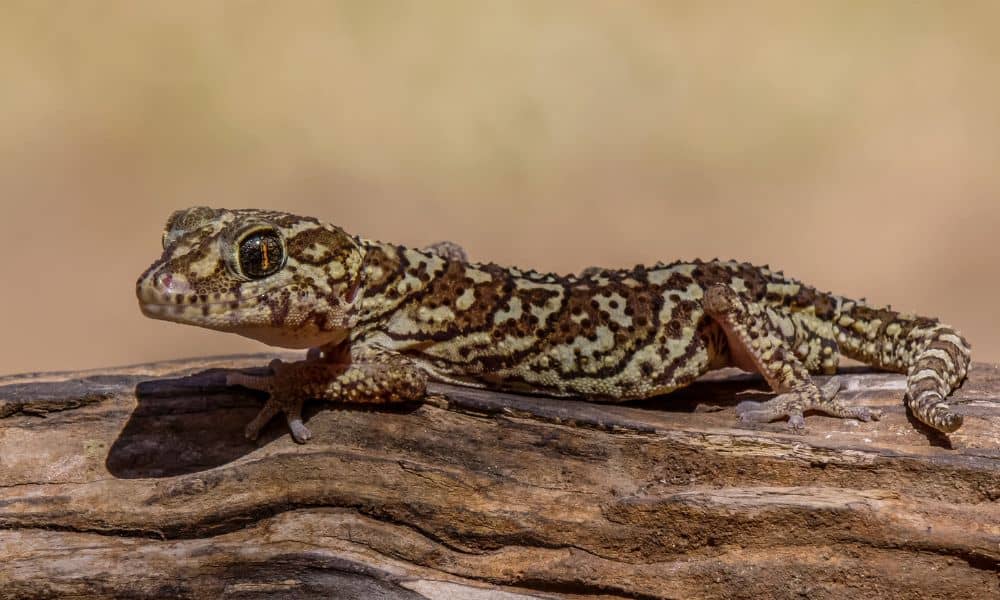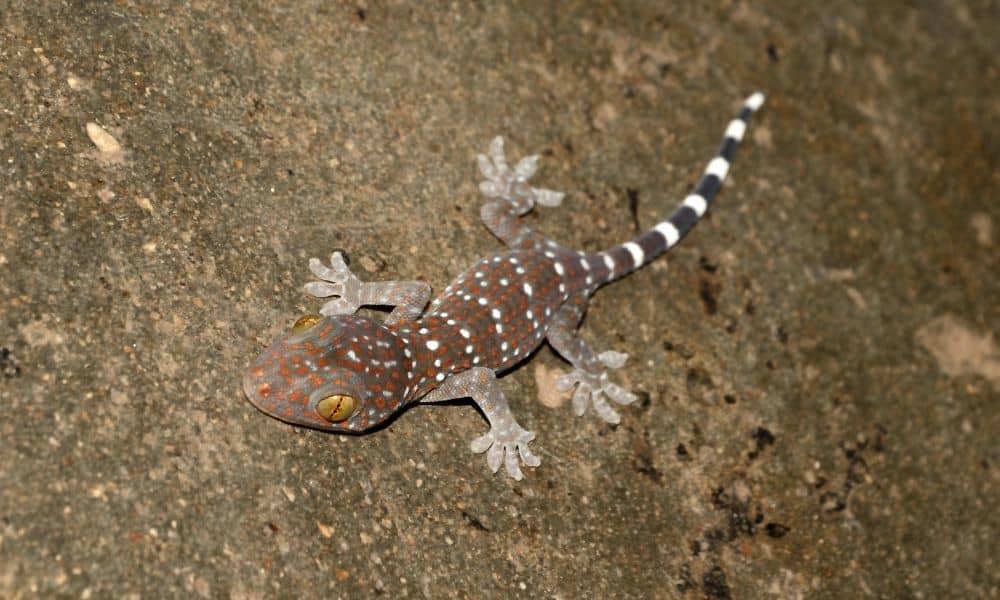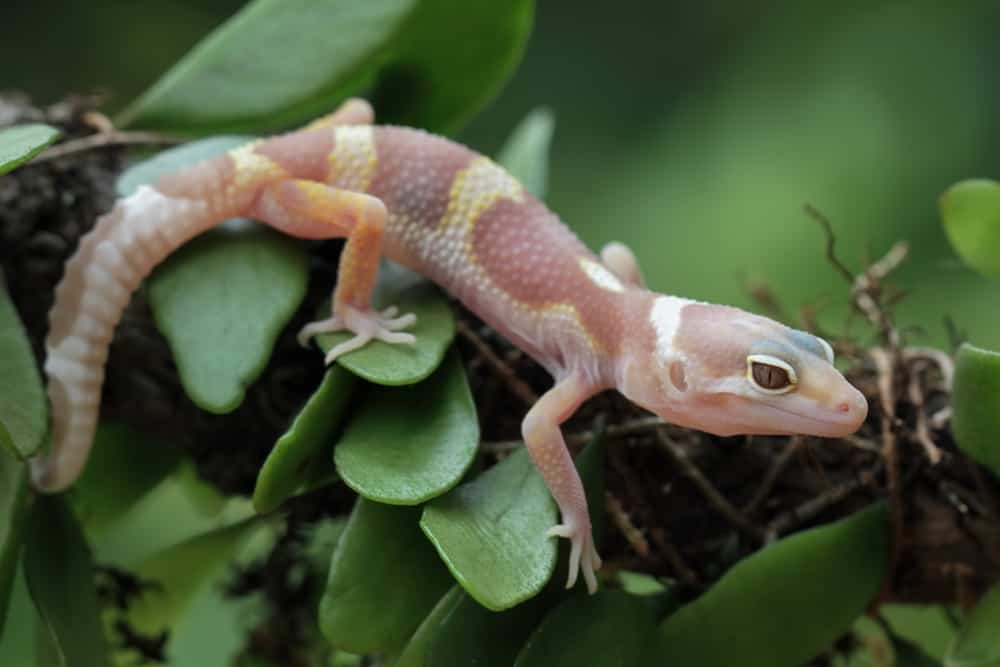Having a lizard for a pet feels strange to a lot of people but if you’ve ever done it before, you know how adorable, rewarding, and easily manageable these animals actually are as pets. Especially once you get their environment right, caring for a gecko becomes as simple as just keeping it’s the temperature and humidity in its enclosure right and giving it enough food and water to thrive.
The crucial period of the whole experience is the early few weeks, however – that’s when you need to work a bit extra hard to make sure everything is in order but that’s also when the gecko is still a baby and will require extra care too. So, let’s go over what do baby geckos eat and how to raise your pet properly.
Baby gecko facts
With over 1,500 species of gecko on the planet, many of them share similar features but also have quite a few key differences. This becomes extra important when you have to look after baby geckos as every little mistake in their feeding habits or environmental requirements can lead to health problems.
So, let’s go over some key facts about adult and baby geckos:
- The many species of geckos can come in various sizes – the tiny dwarf gecko is just about 0.6 inches (1.6 cm) long as an adult and even tinier as a baby. It also weighs only 0.0042 ounces or 120 milligrams whereas some sub-species of the New Caledonian giant gecko can grow up to 14 and 17 inches long (35 to 43 cm) and can be as heavy as 10 ounces (up to 280 grams). Those figures are all for adults too so looking after a baby gecko of a small species can be even trickier.
To be a bit more precise, this is how the different species of geckos are classified:
- The Eublepharidae family and its 6 genera and 30 species
- The Phyllodactylidae family with 11 genera and 117 species
- The Diplodactylidae family with its 19 genera and 117 species
- The massive Gekkonidae and its 52 genera and 950 species
- The Pygopodidae known for its 7 genera and 41 species
- The Carphodactylidae family which includes 7 genera and 28 species
- Lastly, the Sphaerodactylidae family with its 11 genera and 203 species
These seven families all fall within the Gekkota suborder, Squamata order, and the Reptilia class.
- Geckos live in six out of the seven continents with the only exception being Antarctica. This means they are acclimated to various habitats such as deserts, rainforests, mountains, and more. This means that setting up your reptiles’ enclosures should be done with a lot of care and attention to the exact species and needs of each particular species, especially when they are still young.
- Geckos are nocturnal so you shouldn’t expect much activity from them during the day nor should you feed them when the sun’s out. This also makes them a great choice for people who are at work or at school for most of the day and want to rather interact with their pets in the evenings. Naturally, it also means that you should feed your gecko in the evening.
- Geckos are both “water-proof” and bathe very easily – their skin is covered with a great number of hair-like spines that trap air and create a water-proof barrier similar to car wax or couch protective spray. This means that geckos don’t get overly wet and drenched with water, however, they still get cleaner when they bathe because the water does get close enough to their skin to wipe off dust and contaminants.
- The tail of geckos is often used as extra fat storage for when they can’t get enough food. This allows most species of geckos to survive without food somewhere between 10 and 14 days, although there is really no good reason to test your pet in such a way.
- Geckos are generally omnivores with most eating insects, fruits, and flower nectar. However, you should keep in mind that different geckos have different dietary preferences with some species being strictly carnivores and unable to eat fruits or flower nectar. So, you should be fully aware of what specie of gecko you have and what it needs to be fed with exactly.
- Female geckos can be pregnant with their eggs for years before giving birth. This is rather unusual for such a small animal. However, it also means that the newly hatched geckos are pretty big for newborns. For example, the hatchlings of the leopard gecko can be as long as 3 or 4 inches (up to 10 cm).
- Geckos are famous for being able to snap their own tails when chased by a predator to distract them and get away. This useful defense mechanism comes with the added benefit that geckos are capable of regenerating their tails over time. While this ability is awesome in the wild, it’s still recommended not to pick up or pull your gecko by the tail, nor to threaten it enough to detach its appendage.
For one, there’s no point in caring for a pet if you’re going to terrify it that much. Additionally, growing a tail is not 100% guaranteed to be successful as the open wound can occasionally develop infections and lead to health issues. Plus, it’s common for the regrown tail to be a different color or to grow at a weird angle.
Most gecko species have sticky feet that allow them to climb on smooth surfaces. That’s why your gecko’s tank should always have a well-secured mesh covering at the top to prevent escapes and accidents.
- Like many other reptiles, geckos need to periodically shed their skin as they grow. This shedding usually happens once every 4 to 8 weeks depending on the particular species and its age. During that process, the gecko will likely be hiding somewhere in its tank as it’s feeling vulnerable. Babies and juveniles will naturally shed more often as they are growing faster. It’s important to make sure that you don’t “help” your gecko physically as you’ll be very likely to accidentally hurt it. Instead, it’s best to just make sure that your pet’s habitat is as perfect as possible so that it can go through these natural processes as smoothly as possible.
What do baby geckos eat in the wild?
Baby geckos in the wild will typically eat the same types of food as their adult counterparts – they will just go for smaller sizes and safer prey. This is one of the many big advantages of the long pregnancy of female geckos – because their offspring is extra larger, baby geckos aren’t really “babies” – they are basically young adults by the time they hatch.
Of course, they are smaller than adults so they can’t quite catch, overpower, and kill all the same types and sizes of prey. They are also more vulnerable to predation themselves, as well as from physical trauma and diseases, all of which are to be expected from newborn babies, be they large or not.
So, what do baby geckos eat in the wild? The omnivore species that eat not just insects but also fruits and flower nectar will eat whenever they can get access to it. As for the insect prey – both omnivore and carnivore geckos will try to eat insects whenever they can too, just as smaller and safer ones.
This means that gecko hatchlings in the wild can prey on any of the following:
- Crickets, small grasshoppers and spiders, small cockroaches, and other insects small enough for the particular species of the baby gecko to safely catch and eat
- Hornworms, mealworms, wax worms, superworms, and other worms
- Insect larvae of all kinds, be they of flies, beetles, or anything else
The more geckos grow in the meantime, the larger their prey gets as well. For larger species of geckos, adults can often go even for small birds and mammals when they grow large enough.
What do baby geckos eat in captivity?
Owners of baby geckos are spoiled for choice when it comes to choosing their diet. Omnivore baby gecko species such as the bearded gecko, the crested gecko, and others can be fed a combination of commercial gecko food, pieces of fruits and veggies, as well as insects.
The fruits can include pieces of apples, mango, and anything else, especially if it’s native to that species of gecko. Omnivores can also easily be fed commercial food mixtures that usually just need to be mixed 1-to-2 with water and placed in the gecko tanks on a small plate. Such food effectively resembles flower nectar from the gecko’s point of view which is perfect, especially since the mixture is made to have all the nutrients, vitamins, and minerals the gecko needs.
For carnivore species such as baby leopard geckos, you will need a strict insect & worm only diet. What complicates things a bit further is that most gecko species will refuse to eat pre-killed prey and will need living prey to chase and catch.
So, you’ll find that your baby leopard geckos eat prey such as wax worms, Dubia roaches, silkworms, and other insects and worms that are just big enough to fit in the baby gecko’s mouth but not larger than that. As the gecko grows, you can start letting bigger prey in the gecko’s enclosure.
How to care for a baby gecko?
The name of the game with taking care of a baby gecko is building the right environment for it. Baby geckos are generally healthy and sturdy enough to survive easily in their natural environment as long as it has the right properties. This means researching the particular species you have and picking the right tank size, substrates, temperature, humidity, light, and food for it. Do that, and the rest is a matter of just monitoring your gecko’s health.
How to feed your baby gecko?
When having to feed geckos, the quality of the food is crucial. For insects, this usually means gut-loading them with calcium and other supplements such as vitamin D3. You can get insects from outside or from pet stores but a good supplement load is usually important either way just as it’s good to dust the insects with calcium powder. This is done to ensure that your gecko’s food is as nutritious and healthy as possible.
If this sounds like too much trouble, you can also get a non-carnivore gecko and feed it commercial foods that are much easier to deal with – then it’s just a matter of giving the right quantity per meal/day.
How often should you feed your baby gecko?
According to Pet Engineers, while most adult geckos can be fed just 2 or 3 times a week, most baby geckos need to be fed every day. For a baby leopard gecko, for example, this means 5 to 7 small crickets given to the gecko every day. The crickets need to be given one by one as you never want extra live insects in your gecko’s tank before it’s done with the previous prey.
For omnivore geckos of other types, you can diversify the menu with fruits, veggies, and commercial food but the diet should still include several good meals a day for the first few months until the gecko is officially an adult.
What if my baby gecko not eating?
There are two main things to consider if your baby gecko is not eating:
- Maybe you’re not giving it the right food (fruit to a carnivore, prey that’s just too big, etc.) and you should pick different treats
- Your baby gecko may be falling sick, in which case you’d do well to contact your vet as soon as possible
Even if the issue is just that you’re giving your gecko the wrong food, that issue too should be rectified quickly as you don’t want your baby pet to go on malnourished. But if you suspect an illness, the problem is even more urgent. The best course of action is to just call your vet immediately and consult with your vet – they should tell you on the phone what symptoms to look for with your particular species – color and condition of the skin, behavior, color of excrements, etc.
Conclusion
All in all, while there are a few potential pitfalls you’ll need to be careful with, raising a baby gecko isn’t all that difficult, especially compared to some other more common pet types such as puppies and kittens. Once you’ve got the gecko’s environment just right, you’ve learned how to handle it, as well as what and how to feed it, the rest is just a matter of repetition and watching out for potential but rare health issues. That, and enjoying your pet, of course!
